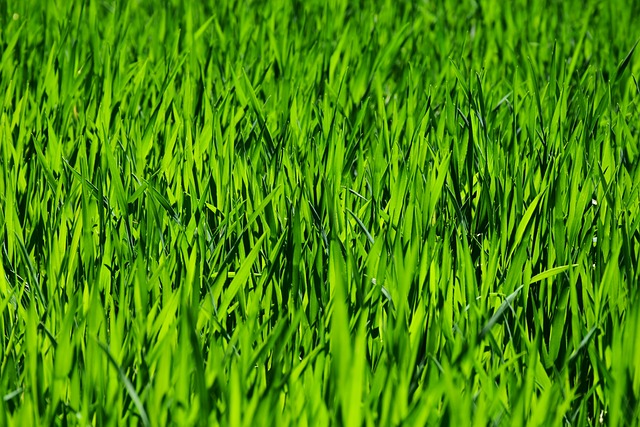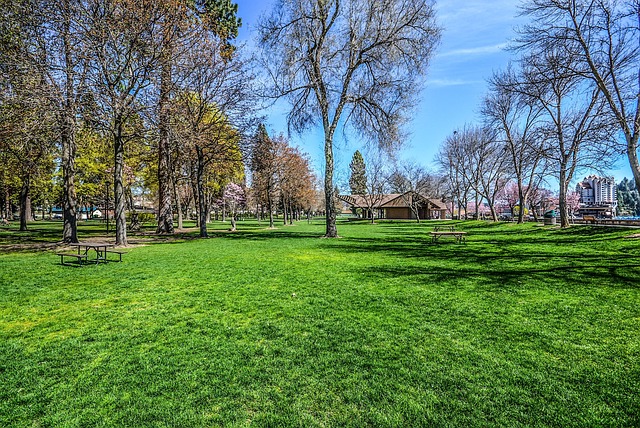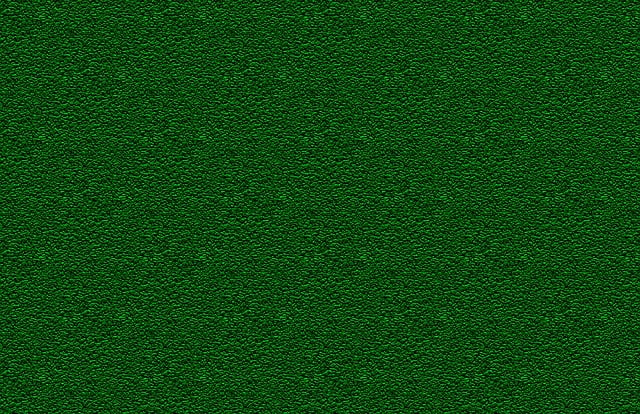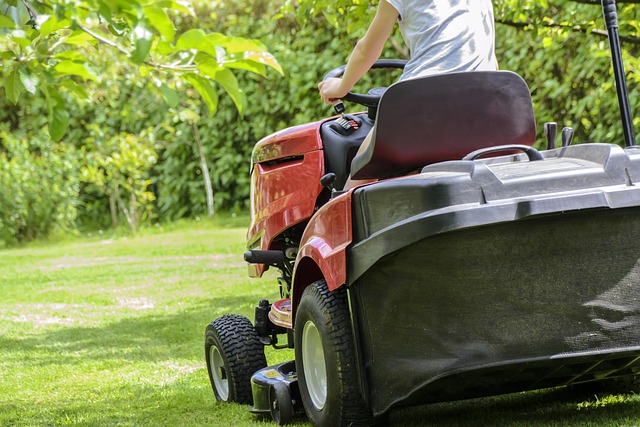Mulching and edging are essential lawn care and landscaping practices that significantly enhance lawn health and appearance. Mulching conserves moisture, suppresses weeds, and enriches soil with organic materials or offers permanent solutions with inorganic options. Edging defines lawn boundaries, prevents grass from encroaching on paths, and provides a polished look. Combining these strategies results in a vibrant, low-maintenance outdoor space year-round.
Transform your lawn into a picture of health and elegance with mulching and edging—essential practices in lawn care and landscaping. This comprehensive guide explores the profound benefits of mulching, from retaining moisture to suppressing weeds, and delves into various types suitable for different grass varieties. Edging techniques are then detailed, showcasing how they enhance your lawn’s aesthetics while improving drainage and preventing grass from encroaching on pathways. Discover best practices to ensure a lush, well-maintained lawn that stands out in the neighborhood.
- Understanding Mulching: The Benefits and Types for Lawn Health
- Edging Techniques: Enhancing Your Lawn's Aesthetics and Functionality
- Effective Mulching and Edging Practices for Long-Lasting Lawns
Understanding Mulching: The Benefits and Types for Lawn Health

Mulching is an essential practice in lawn care and landscaping, offering a multitude of benefits for your lawn’s health and overall aesthetics. It involves placing organic or inorganic materials on top of the soil to conserve moisture, suppress weeds, and enhance nutrient cycling. Organic mulches, such as wood chips, straw, or compost, are derived from natural sources and gradually decompose, enriching the soil with essential nutrients. Inorganic options, like stones or rubber, provide a more permanent solution but offer less nutritional benefit.
One of the primary advantages of mulching is its ability to retain moisture in the soil, which is crucial for maintaining a lush lawn. By reducing evaporation, mulches minimize the frequency of watering, promoting deep root growth and overall lawn health. Additionally, mulching helps suppress weed growth by blocking sunlight, preventing their seeds from germinating. This not only keeps your lawn looking neat but also reduces competition for nutrients and water, allowing grass to thrive. Different types of mulches cater to various preferences and needs, making it a versatile practice in lawn care and landscaping.
Edging Techniques: Enhancing Your Lawn's Aesthetics and Functionality

Edging, a precise and thoughtful technique, is an integral part of lawn care and landscaping. It involves defining the boundary between your lawn and paths, gardens, or other landscapes, creating a clean and polished look. This simple yet effective practice not only enhances the overall aesthetics of your outdoor space but also serves a functional purpose. A well-edged lawn provides a clear distinction between different areas, making it easier to maintain and manage.
There are various edging techniques to choose from, each offering unique benefits. From traditional hand-held edgers to power tools, these instruments allow for precise cutting of grass along edges and borders. Incorporating edging into your regular lawn care routine can transform your outdoor space into a beautifully manicured oasis. It’s a detail that shows dedication to both the visual appeal and practical maintenance of your lawn and landscaping efforts.
Effective Mulching and Edging Practices for Long-Lasting Lawns

Effective Mulching and Edging Practices for Long-Lasting Lawns
Mulching and edging are essential lawn care and landscaping practices that contribute to a lush, healthy, and long-lasting green space. Mulch acts as a protective layer, retaining soil moisture, suppressing weeds, and gradually releasing nutrients into the earth. When applied correctly, it helps maintain the lawn’s overall health and reduces water evaporation from the soil surface. Edging, on the other hand, defines the boundaries between your lawn and paths or driveways, providing a clean, polished look. Regular edging also prevents grass from encroaching onto these areas, reducing maintenance efforts in the long term.
For optimal results, consider using organic mulches like wood chips or straw to enhance soil fertility and support beneficial microorganisms. In landscaping projects, strategically place edging materials such as stone, brick, or plastic to create distinct lines and prevent grass from growing where it’s unwanted. Combining these practices not only enhances the aesthetic appeal of your lawn but also simplifies future maintenance tasks, ensuring a vibrant and well-maintained outdoor space throughout the seasons.
Mulching and edging are essential practices in lawn care and landscaping, offering both aesthetic and functional benefits. By understanding the various types of mulches and their advantages for lawn health, as well as mastering simple edging techniques, you can significantly enhance your yard’s overall appearance and durability. Incorporating these practices into your routine maintenance will ensure a lush, vibrant lawn that stands out in the neighborhood.
